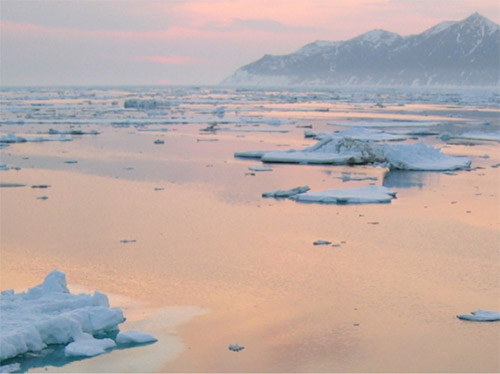Courtesy: August 2022 Report: State of the Climate in 2021 in the Arctic (PDF) |
Several other IARC scientists are authors or co-authors of sections within the Arctic chapter. Below are highlights from their work:
Tom Ballinger is lead author, Uma Bhatt, John Walsh and Rick Thoman are co-authors of the Arctic Surface Air Temperature section.
- Temperatures across mainland Alaska were near or below average during 2021. The North Slope was colder than normal in winter and the Interior was colder than normal in fall.
- Temperatures in the Arctic basin were not notably different from normal.
- Canada’s eastern Arctic and Greenland were warmer than normal in most seasons.
- Northern Eurasia was unusually cool in winter 2021, then unusually warm (again) in spring 2021.
- Spring 2021 was the fourth warmest on record in the Arctic since 1900.
Gabe Wolken is a co-author of the Glaciers and Ice Caps outside Greenland section.
- Arctic glaciers were a large contributor to recent sea-level rise.
- From 2020 to 2021, glaciers and ice caps lost significant ice throughout the Arctic, especially in Alaska and Canada.
- Arctic glaciers and ice caps have consistently lost mass since 2002 at an average rate of about 174 gigatons per year. This amount of loss transferred to the ocean equates to about 1.5 Lake Iliamnas per year.
Uma Bhatt is a co-author of the Arctic Vegetation section.
- Vegetation productivity in the Arctic was lower in 2021 than 2020, one of the most productive years.
Melinda Webster, Vladimir Romanovsky, Skip Walker and Gay Sheffield, all University of Alaska Fairbanks researchers, also contributed to the State of the Climate report.
NOAA’s National Centers for Environmental Information assembled the report using contributions from more than 530 scientists in over 60 countries.
ON THE WEB:
State of the Climate report in IARC’s: Quick Guide to Climate Reports
State of the Climate in 2021 (PDF)
August 2022 Report: State of the Climate in 2021 in the Arctic (PDF)
This article is provided as a public service by the University of Alaska Fairbanks, International Arctic Research Center. Heather McFarland [hrmcfarland@alaska.edu] in an information officer and science writer with the International Arctic Research Center. |
Representations of fact and opinions in comments posted are solely those of the individual posters and do not represent the opinions of Sitnews.
Send a letter to the editor@sitnews.us
SitNews ©2022
Stories In The News
Ketchikan, Alaska
Articles & photographs that appear in SitNews are considered protected by copyright and may not be reprinted without written permission from and payment of any required fees to the proper freelance writers and subscription services.
E-mail your news & photos to editor@sitnews.us
Photographers choosing to submit photographs for publication to SitNews are in doing so granting their permission for publication and for archiving. SitNews does not sell photographs. All requests for purchasing a photograph will be emailed to the photographer.

